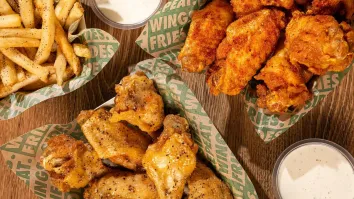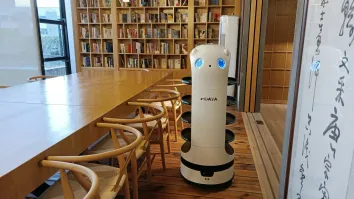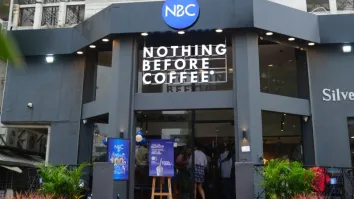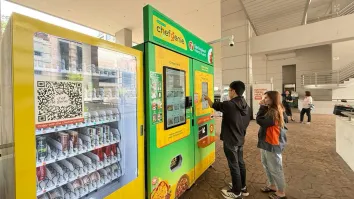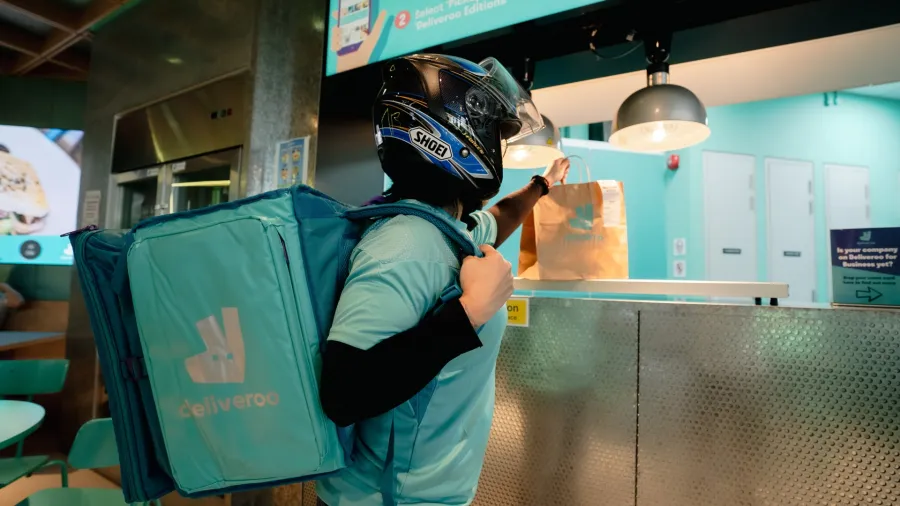
QSRs should focus on value to increase customer loyalty
Deliveroo’s Andy Lo shared a few key insights that QSRs should remember.
Deliveroo Singapore’s latest consumer survey reveals that demand for delivery is still unabated with a reported 60% of Singaporeans turning to food delivery more regularly compared to pre-pandemic.
The implications of this for quick-service and fast-food restaurants will be part of the discussion between food service aggregators at the upcoming QSR Media Asia Deliverect Conference & Awards 2023 this 27 April in Singapore.

In a quick interview with QSR Media, Commercial Director for Deliveroo Singapore Andy Lo talked about some of the key trends he noticed in the industry and a few tips for QSR aggregators to reach their customers.
QSR Media: What key trends have you observed in the food delivery industry in the past 12 months?
Our latest consumer survey found that food delivery has become an integral part of our lifestyles, especially in the last two years, due to the convenience it has brought. In fact, the results cited that more than a whopping 60% of Singaporeans are now turning to food delivery more regularly compared to pre-pandemic.
The pandemic has also shifted consumer preferences, with more Singaporeans open to adopting a more healthy and sustainable lifestyle, while supporting local businesses. Healthy food options came top of mind for many Singaporeans, especially 56–65-year-olds (56%) and 36-45-year-olds (47%). Our survey shows that over two-fifths (42%) of respondents indicate that healthier food options and the availability of sustainable packaging are some of the most important factors when selecting a grocery or restaurant for delivery. Their preferences also signal Singaporean values such as patriotism and societal shifts around conscious consumption and sustainability. Almost half of the respondents want to support local eateries and are willing to pay more to support hawkers.
What changes have you observed that greatly impacted the industry and how did you realign your strategies to accommodate these changes?
Based on the key trends mentioned above, we noticed the following shift in needs among our stakeholders and pivoted our focus accordingly.
For customers, consumers are now used to the convenience food delivery services bring and they have developed habits of using them. This enabled us to continue engaging and building loyalty amongst these consumers to encourage their frequency of using our services.
As such, we offered a one-month trial for Deliveroo Plus, our subscription plan, to also ease the financial strain on Singaporeans who are now more reliant on food delivery. To date, we continue providing consumers with various Plus options to better suit their needs and savings.
In terms of healthier food options, we continuously look to onboard and engage more restaurant partners offering such choices to our customers. With this commitment in mind, we have been adding an array of healthy options like SaladStop! and VIOS by Blu Kouzina. Not forgetting their craving for local food, we also onboarded the likes of CRAVE in order to provide customers with an even wider variety of choices.
For restaurant Partners, understanding that the pandemic has shifted customers' preference towards delivery, restaurants need to fully embrace the increased demand for deliveries. To best support, delivery platforms must also establish dedicated teams to work with restaurants to identify their gaps and requirements in order to best cater to what and how restaurant partners can deliver.
Hence, we refocused all marketing initiatives to profile local restaurants and highlight delivery as 'open for business' to encourage consumers to support their local restaurants, along with various other support initiatives.
Coming into the post-pandemic era, restaurants will still recognise the importance of food delivery and that it is complementary to their dine-in services, bringing in additional revenue. Some of them understand the tricks of working on food delivery orders and adapt operationally for efficiency purposes. Hence, close partnerships between delivery partners and restaurants will be key in maximising revenue and efficacy.
As an aggregator, what are your top 3 advice so brands can reach their customers better?
Focus on value – customers appreciate the value they receive for loyalty and support.
For example, we found that Singaporeans spend S$108 a month on food delivery services, a 62% increase from 2019’s average monthly spend of $67.54. As such, restaurants and delivery partners need to work together to offer customers promotions, especially by rewarding loyal and repeat customers in order to encourage their return. Additionally, including wallet-friendly menu items can also be a huge draw, especially with inflation on the rise.
By already foreseeing an average monthly customer spend, restaurants can work on various price options in order to better attract customers, fit into customers’ budgets and get a bigger share of the pie (being the average monthly customer spend).
These findings further validated our launch of Deliveroo Plus, an islandwide subscription service, priced at a fixed price a month, enabling customers to get unlimited free delivery, plus exclusive discounts every month. With Deliveroo Plus, we hope to deliver more value (beyond food and groceries) to the doorsteps of our consumers.
Focus on sustainability and healthy options – customers are increasingly conscious about the environment and their health. As such, industry players need to help their partners and customers make choices that are more aligned with their preferences.
Our survey shows that over two-fifths (42%) of respondents indicate that healthier food options and the availability of sustainable packaging are some of the most important factors when selecting a grocery or restaurant for delivery.
In order to be a socially responsible company, brands can explore the following as with how we’ve done thus far in recent years. These include:
○ Cutting down on cutlery and single-use items - Since 2018, we have made cutlery an opt-in, and over two-thirds of meals are now delivered without disposable cutlery.
○ Collaborate with like-minded businesses to offer consumers more sustainable meal choices (be it through the use of naturally-sourced ingredients, sustainable fishing, to packaging) - In 2019, we partnered with BioPak to offer sustainable packaging options to all our restaurants, so we can help our restaurant partners make the easy switch to eco-friendly packaging and enable our customers to enjoy their meals sustainably.
Work with delivery platforms and partners to encourage the use of registered power-assisted bicycles/scooters - this is in line with Singapore’s push towards the use of cleaner energy vehicles and the Green Plan 2030. To cater to customers who are looking for healthier options - incorporate healthy menu items as much as possible, so that customers know that these restaurants place significance on healthy foods too
Potentially highlighting the nutritional value tagged to each item (as an estimate) Focus on ODC – the growing reliance on groceries delivery amongst consumers.
Our survey also found that almost 60% of consumers prefer getting groceries delivered over going to the supermarket. This clearly has some synergy between getting groceries and food delivered. As such, restaurants should explore working with grocers and supermarkets to have their ready-made products listed in their inventory too. These include sauces, cheeses, cured meats, house brews and other food items with longer shelf life. Beyond that, with restaurants can also partner grocers/supermarkets to provide referrals and promos for food deliveries, tapping on their reach, and brand recall and in turn, providing value.
What topic do you think is vital to talk about in the upcoming QSR Media Asia Deliverect Conference and Awards?
In line with the focus of this year’s topics around the growth trajectory of the on-demand delivery industry and the evolution of consumer behaviour post-pandemic, we will aim to further highlight the need to provide stakeholders with greater support on the back of inflation and economic uncertainties.
###
Catch Andy and the rest of the industry leaders at the upcoming QSR Media Asia Deliverect Conference & Awards 2023 this 27 April in Singapore. For more details please visit this link.


